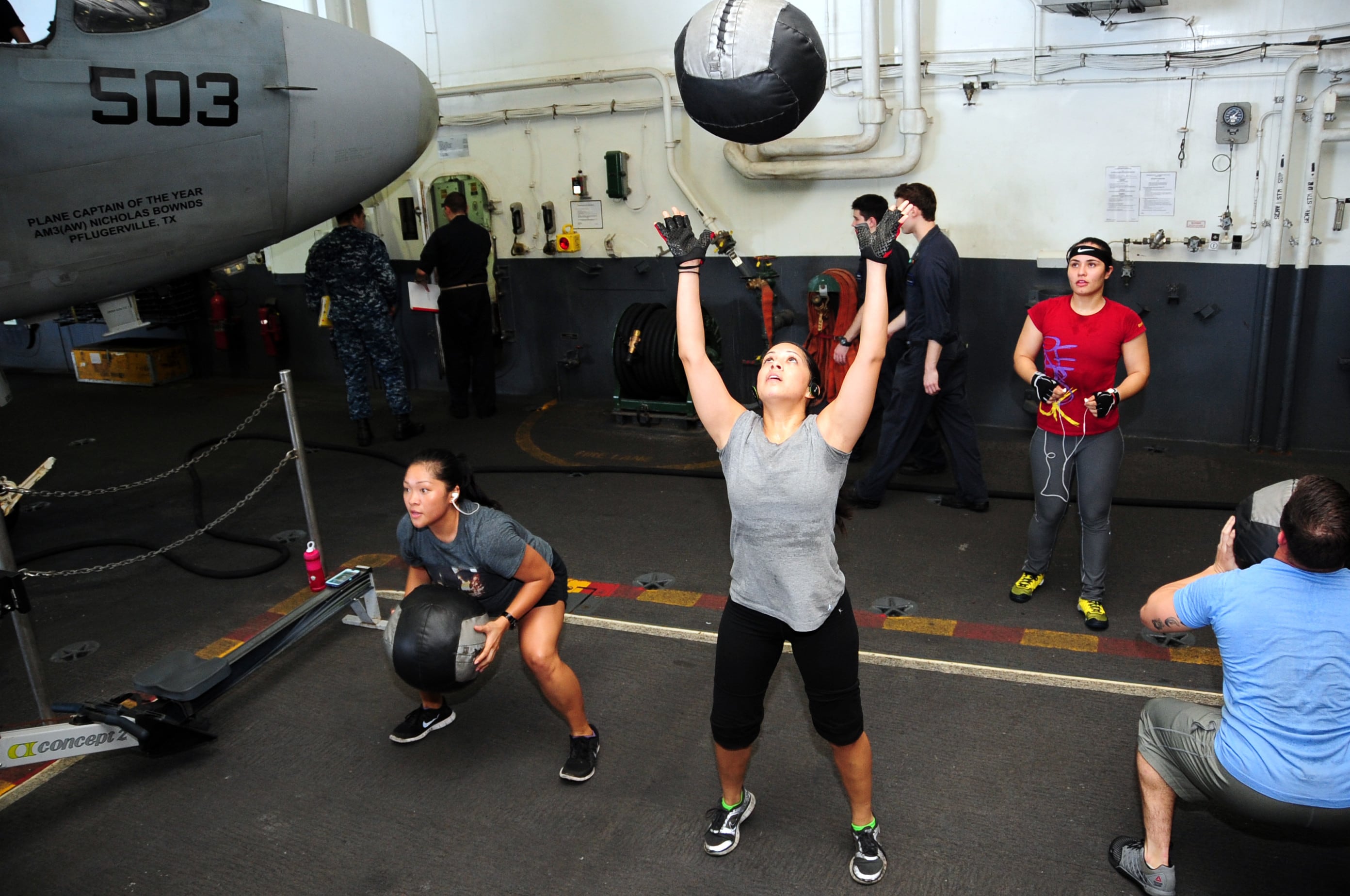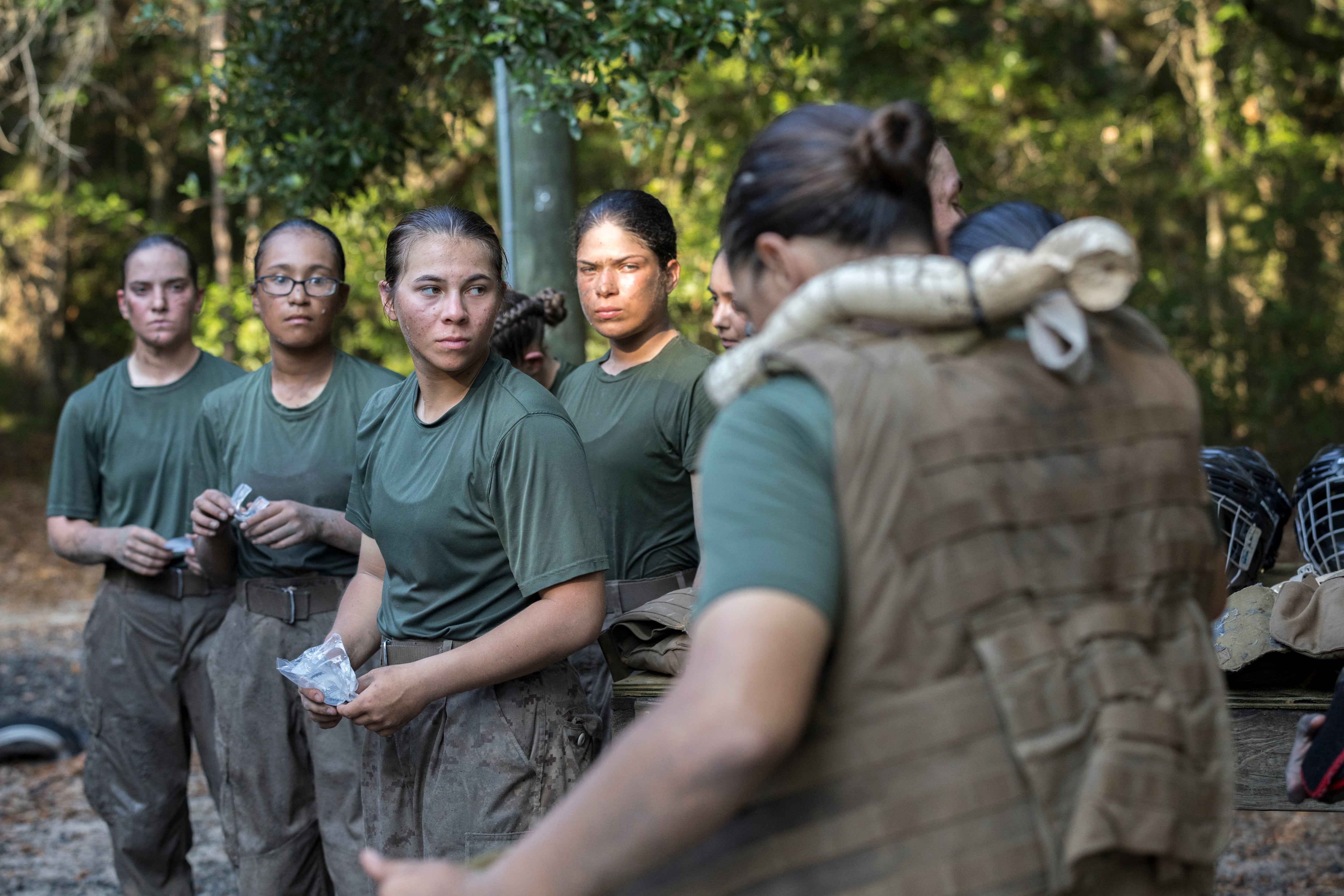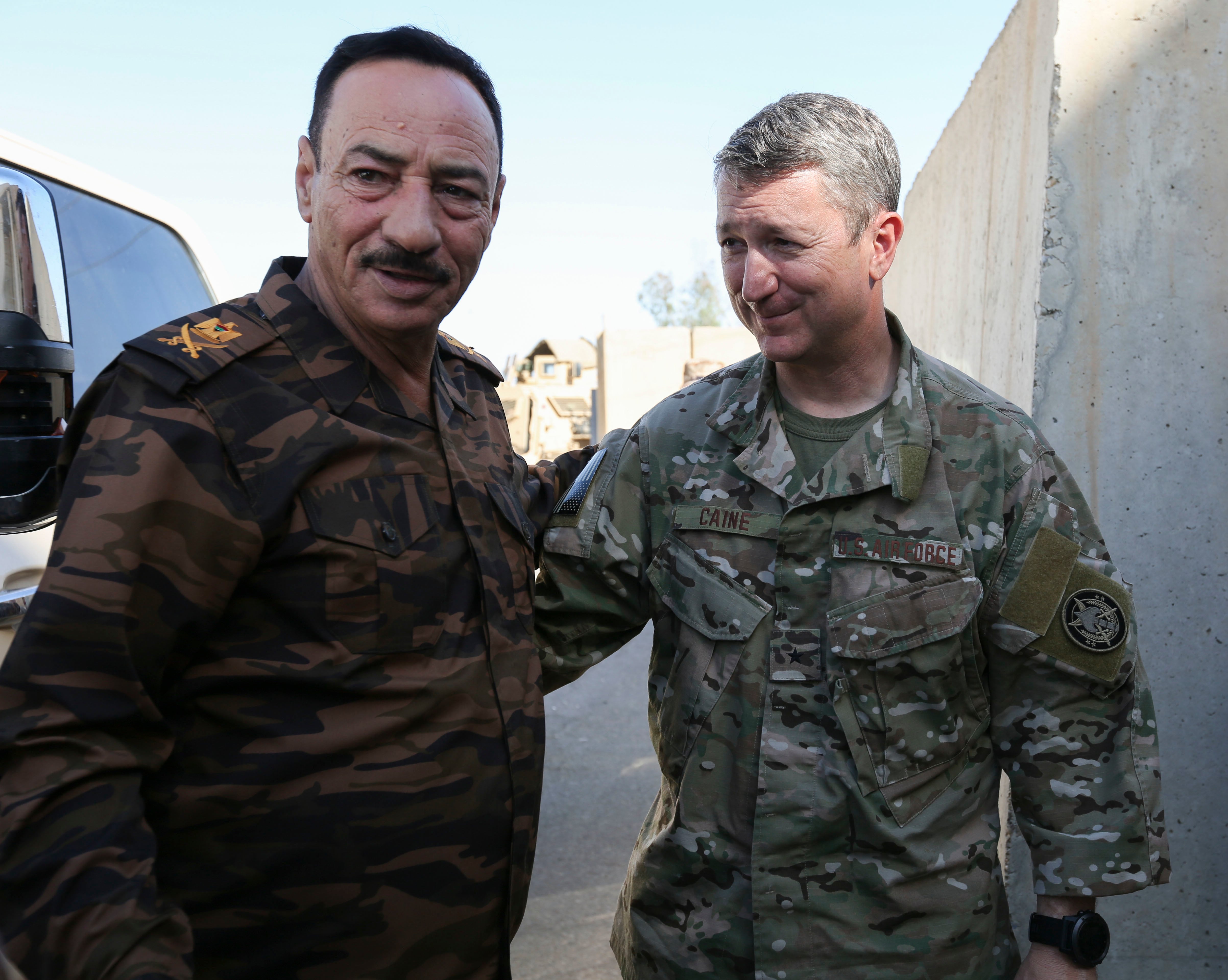You know the drill: sit-ups, pushups and a 1.5-mile run. It's a hassle, it's stressful, it's an exertion that has nothing to do with being a sailor, sailors have griped for decades.
Well, you may soon be about to get your wish.
Now, radical changes may be coming to your fitness test.
Now that the Navy has rolled out its new body composition standards and changed the consequences for falling out of standards, a revamp of the physical readiness test is next on the list.
Navy fitness bosses are eyeing radical changes to the The chief of naval personnel's office is taking a look at theree three-part Physical Readiness Test that sailors love to hate, officials say, and theysailors can expect to see changes sooner rather than later.
"We're not talking about years from now," Master Chief Petty Officer of the Navy (AW/NAC) Mike Stevens told sailors at an Oct. 13 all-hands call. "We're talking about this happening pretty soon."
Chief of Naval Personnel Vice Adm. Bill Moran has hinted this year at forthcoming changes to the athletic portion of the physical fitness assessment, and Stevens took a sailor's question about the future of PRT curl-ups as an opportunity to provide more details on upcoming changes. Specifically, he floated the idea of a job-related PT test, something sailors have suggested for years — and that other military services have adopted or are considering.
"So we do pushups., curl-ups and run, but does that tell you that you can put on firefighting gear and go down into a space and carry somebody out of it?" he asked. "Does that test tell you that you can do that? And the answer is no."
A working group at the Physical Readiness Program in Millington, Tennessee, is brainstorming ideas, a Navy official confirmed, from new PRT events and a job-specific test, to a possiblehybrid that would measure bothbasic strength and cardiovascular health, — as the current test does —as well as skills needed for working around ships, aircraft and other Navy environments.
They're looking at other professional fitness tests that might have some fleet relevance, such as the stair climbs in firefighting training. Fitness experts are recommending new exercises like the standing jump and the kneeling powerball throw as part of an job-related fitness test, which could replace the traditional PRT or be administered annually, much like the Marine Corps' combat fitness test.
The Army is also developing tests that measure fitness for combat.
The working group is still gathering and developing ideas and officials said they haven't developed a proposal that they're ready to discuss.
Both officials spoke on background because they were not authorized to publicly comment while the working group continues developing its proposals. on the working group.
"We're looking at a variety of options, but no decisions have yet been made," confirmed Lt. Cmdr. Nate Christensen, Moran's spokesman.
A better test
Going operational

Fitness experts recommend the Navy adopt exercises that use a medicine ball to assess a sailor's explosive power, needed for skills like damage control. Here, sailors perform medicine ball squats aboard the aircraft carrier George H.W. Bush.
Photo Credit: MC3 Joshua Card/Navy
Stevens made clear that the Navy is seriously eyeing an Another suggestion from experts is an operational fitness test, to test sailors on physical challenges they might encounter at work.
Stevens confirmed the Navy is looking into it.
"So maybe sometime in the future, our PRT is more connected to our actual jobs, and what we do," Stevens said. "So if you have different readiness tests depending on what you do in the Navy, or what you're supposed to do."
Fitness experts have been assessing other tests that could better measure the kinds of skills and energy that sailors need for common skills, such as fire-fighting or carrying heavy objects.
In 2011, then-Lt. Cmdr. David Peterson has worked with Navy experts to study improvements to the Navy's twice-annual PRT. He has developed a five event test: and assigned to the Navy's Physical Readiness Program at Millington, Tennesee, teamed up with Schilling, another Memphis colleague and a Ph.D. student from the University of Pittsburgh, to test out nine new events on 179 sailors. Peterson designed a five-event test in his July study: A 40-yard dash, standing long jump, kneeling powerball toss, 300-yard shuttle run and a 50-yard loaded carry.
These events go beyond basic strength and endurance to measure a sailor's ability to sprint, jump and change directions quickly, all important for combat as well as avoiding injuries in general.
"One of the best predictors of overall endurance is muscular strength. It is a very vital component of fitness. We find people who are stronger fare better in job-related scenarios," he said. "The two tests that I’m proposing ... , which are the kneeling powerball toss and standing long jump, by definition they measure power. Power correlates to muscular strength."
For example, a long jump measures basic muscular strength, while a loaded carry simulates a firefighting or lifesaving drill.
These tests would, of course, require new standard equipment and training for the command fitness leaders who administer them.
The problem, Schilling said, is the equipment required.
"If you bring implements in — beyond what we have right now, which is a stop watch — are you going to have to carry the thing?" Brian Schilling, a physiologist who has advised Navy fitness, said. "And you're going to need thousands of them throughout the whole fleet."
Training for the CFLs and the test-taking sailors There's also the issue of training sailors for the events, but both Schilling and Peterson said that could be solved with regular boot camp fitness training and CFL familiarization.
In general, there are two directions the changes could take. Officials could adjust the twice annual PRT to include the powerball toss, a loaded carry and the 1.5-mile run, for instance. Or they could stick with the existing PRT and then create a wholly new operational fitness test.
Suppose an operational fitness test is picked. It could become the fall cycle test, while the spring cycle would be the normal PRT, a set-up similar to that used by the Marine Corps.
The end of situps
Fitness experts have also been working on ways to improve the PRT, which is designed to measure heart and lung function and core and upper body strength. Critics have repeatedly said that poor form on the curl-ups and push-ups will hurt your back and that there are better exercises.
Navy fitness bosses say the current The reason for a PRT is to measures sailors' overall heart and lung function, as well as basic core and upper body strength.
But critics have pointed out time and again that, on top of how easy it is to cheat with poor form on push-ups or hurt your back doing curl-ups, neither are effective.
"They’re not really a measure of strength, they’re just another measure of muscular endurance," said Brian Schilling, who is a University of Memphis health studies professor, told Navy Times in an Oct. 21 phone interview.
Fitness experts have Experts both inside and out of the Navy have published studies suggesting improvedbetternew events, including: . The events included the single-leg plank, the single-leg wall squat, cadence pushups, leg/hip dynameter, standing long jump and pro-agility test, as well as a 300-yard shuttle run, 2-kilometer row and 5-kilometer bike ride as cardio alternatives to the 1.5-mile run.
Schilling said these exercises were recommended esuggestions were chosen because they were harder to cheat on (like pushups on a cadence), less likely to cause injury or mimicked a shipboard activity, Schilling told Navy Times in June.
Peterson, a designated Navy aerospace physiologist with a Ph.D. in sport management, now the physical education executive officer at the Naval Academy, published a follow-up study in July that exploresing both a streamlined PRT and an operational fitness test.
He suggested changes to the standard PRT Rather than change up the whole PRT, he suggested a three-part Navy General Fitness Test: A waist measurement, a plank and a 1.-5 mile run. That would be the end of push-ups and sit-ups, effectively.

Fitness experts say that there are better exercises to assess a sailor's core muscle strength than the sit-ups, which are unpopular with sailors. Sailors took the curl-up portion of the fitness test in May on the carrier Harry S. Truman.
Photo Credit: MC3 A.A. Cruz/Navy
"The Navy obviously would like to have some type of strength for muscular endurance assessment as well, and I think the plank is much more operationally relevant than the push-ups and curl-ups," Peterson said, referring to the exercise's engagement of every major muscle group. To do it, a sailor must keep their body straight between their toes and their forearms, which rest on the ground. This exercise can be held for minutes without risk of injury he told Navy Times in an Oct. 22 interview.
The run is a good measure of Further, Schilling said, as running is already a test of muscular endurance, making events like pushups redundant anyway, some experts say. more events might be redundant.
"Are doing the additional tests really telling us any additional information?" Schillinghe said. "If you just based it on the run, you’d probably get the same number of passes and failures."
The Navy has adopted the waist measurement as its new tape test, with a 39-inch max for men and 35.5 inches for women, as outlined in a NAVADMIN released in August.
The components of health are body composition, aerobic capacity, muscular strength, muscular endurance and flexibility, Peterson said.
But to translate all of that into a fitness test would take not only large amounts of equipment, but time to perform all of the events. If the Navy wants a straight-up strength test, something like a single bench press, squat or dead lift would do the trick, but it wouldn't be efficient.
As an example, he said, Peterson recently did his own maximum bench press test, which took 35 minutes to set up between gathering equipment and practice runs going under and over his ideal weight to make sure he had just the right amount.
Despite being the least popular part of the PRT, the run also serves an important purpose: it And the run, despite sailors' complaints that it doesn't apply to their jobs, is still the best way to test a person's maximal oxygen usage and biomechanical efficiency, signs of overall health.
In fact, Peterson said he believes the service has gotten too lenient about allowing sailors to do alternate cardio, like the swim, bike or eliptical. However, Peterson said that in his view, the Navy has gotten too lenient about that element. Unless they have a medical waiver, he said, all sailors should be required to run their PRT.
"None of the other services, the Air Force included, allow members to treat the PRT like Burger King, where they can pick what they want to do for their cardio," he said.
The other challenge is setting up each stationary bikes and elliptical in a way to measure calories burned equally across different brands and models and to factor in the amount of wear and tear on each machine. For this reason, in a wayAnd as far as cardio alternatives, Peterson suggested a rowing machine since it's easier to rather than the stationary bike or elliptical, as both are difficult to standardize from machine to machine and person to person.
The Navy has spent $750,000 validating 33 different elliptical machines and seven different bike models, he said, to make sure that they fit into the PRT's calculation for calorie burn that would equal the 1.5-mile run. He knows, he added, because it was part of his job at Millington.
"That's like you taking an English test and me trying to guess what you would score on a math test," he said.
He said a much better test would be Concept2 brand rowing machine, all of which have a 2-kilometer mode that clocks your results on the screen as soon as you finish.
In contrast, to stop a bike or elliptical test at 12 minutes, you have to stop moving, then the screen would go dark, and then start moving again to see your numbers — and then try to write them down before they start increasing.
Peterson's study also argues that the current PRT's designinherently favors thin sailors.
"In addition to showing a poor correlation between the ability to accomplish physically demanding and occupationally relevant tasks, research also shows that the events in most military physical fitness tests (i.e., sit-ups, pushups, distance runs) impose a body mass bias against heavier service members," he wrote.
In light of new BCA standards, which are more forgiving to bodybuilders and other more stocky sailors, a new fitness test could even the playing field.
Sister-service inspiration
The Navy is considering a hybrid test that would measure both cardiovascular health and operational strength, endurance and agility, an official told Navy Times. They can look to the Marines and Army for ideas., but both Schilling and Peterson suggested that the Navy would need two exams to measure everything leaders want to test.
For one, Schilling said, muscle-fatiguing tests need to be spread out over days, so you wouldn't do a distance run and a shuttle run in the same day, for example.
"You probably don't have to look much further than what the Marine Corps did," Schilling said, with its once-a-year combat fitness test.
Implemented in 2009, the CFT includes three events for both men and women: An 880-yard run, an ammunition lift and a maneuver under fire exercise.
Marines also take a general physical fitness test once year, in the other cycle. That's a good model for the Navy, Peterson said.
"The reason why this would be beneficial is it forces people to be more comprehensive and robust in their training program," he said. "For first six months they do the PFT, next six months they do the CFT."
Though the Navy is working to spread a year-round fitness culture, for many it doesn't take a lot of practice to get into the so-called "Three Mile Club."
"A lot of sailors can do nothing all year and do very well on the PRT. They can gut out enough push-ups and curl-ups without having to train," he said. "You couldn't take that approach if the Navy had a more comprehensive program."
The Army, after scrapping a proposed combat fitness test in 2012, started a new study the following that includes research on ways to test physical combat effectiveness.
"Soldier 2020," as the study is called, has held pilot tests with both men and women to test possible events for another test, including 6-foot wall climbs in full gear and removing the barrel of an armored vehicle's 25 mm gun.
The Millington working group is also considering some events firefighters use in their own fitness tests, as many of the Navy's most high-pressure situations include damage control and personnel recovery.
For example, firefighter fitness tests often include a stair climb, equipment carry and hauling a 165-lb. dummy to safety.
Though there's an emphasis on jobs-related tests, an official said, they won't be as specific as down to each rating. Everything is still up in the air, he confirmed.
"I believe that sometime in the future, we're going to see the physical readiness portion of it change also, but we want to make sure that we don't move so fast that we're making mistakes that we've got to make and undo," Stevens said in the all-hands call.
But until then, he added, "sit-ups are going to be around for a little while."
Meghann Myers is the Pentagon bureau chief at Military Times. She covers operations, policy, personnel, leadership and other issues affecting service members.




